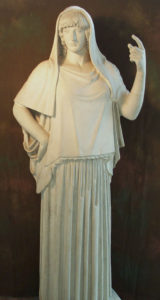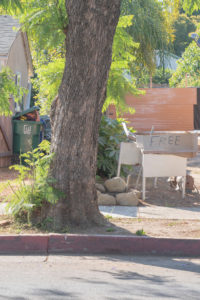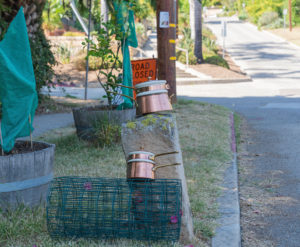 Two interrelated crises (one social and one biological) challenges the way we deal with our home environments, and how we tend our home and hearths. The recent loss of my father to COVID complications inspired me, an appraiser of art and antiques for three decades, to write this.
Two interrelated crises (one social and one biological) challenges the way we deal with our home environments, and how we tend our home and hearths. The recent loss of my father to COVID complications inspired me, an appraiser of art and antiques for three decades, to write this.
Dad died last month without leaving ANY instructions about WHAT to give to each of his five children. Whenever I brought up the subject of an appraisal for equitable distribution, I caused him discomfort. Now his will went missing….
This COVID experience taught us that no one lives forever, and the importance of certain tasks: insurance, heirship decisions, donations. Situations call us to act from our center, and we increasingly call our homes our center. Take time NOW to tackle some of those ‘home jobs.’
I offer you practical methods for HOMEWORK
- proper way to insure (or review your insurance) of your belongings
- tactics for evaluating household valuables to distribute after death
- ins and outs of donations
- the importance of an inventory
Now that we must remake a world for ourselves, let’s take care of the people and the objects that mean something to us.
Let’s become object–centered for a minute
Put an object that matters to you in your mind. Ask yourself how best to curate that object. First, for your family and heirs. Second, to give back to your community. And, last, how to insure that object correctly.
I used the words “an object that matters” because matter stands at the heart of this discussion. Matter means qualified material. Materialism is a bad word, I’m told. But we ourselves are made of matter, and those we love are also made of matter. I’m here to say to love what matters is not a bad thing. Think of that object you pictured in your mind. I bet that object holds symbolism for you. Does it remind you of a person? A place?
An old expression defines life as “people, places, and things.” Well, the people in our lives might disappear, like my dad, or have retreated to their own cocoons. The places we treasured might be in the past for a while. Things remain!
The object-centered tradition in ancient Greece
 The most materialistic goddess is the oldest goddess, Hestia. She curates the family hearth and home. She holds the keys to the storeroom cupboard, and ancient Greeks worshiped her at the family hearth. At the start of every legislative session they honored Hestia as the matriarch of the house. They took a coal from her family hearth to the hearth of the polis, a fire that burned before the main senate house. This symbolizes that if the home contains no fire, no vitality, the state won’t either.
The most materialistic goddess is the oldest goddess, Hestia. She curates the family hearth and home. She holds the keys to the storeroom cupboard, and ancient Greeks worshiped her at the family hearth. At the start of every legislative session they honored Hestia as the matriarch of the house. They took a coal from her family hearth to the hearth of the polis, a fire that burned before the main senate house. This symbolizes that if the home contains no fire, no vitality, the state won’t either.
Without order in the home, the community won’t achieve order. This bottom-up approach works in the rearing of our children. Hestia serves as the ancient Greek role model for this approach. Care for your hearth and home expands into the community and into the “polis,” the Greek word for political body. Note the word “body,” also a reflection of the material nature of community. We invoke Hestia to our homes, where no doubt you read, or hear, my words….
FREE Stuff
 First, I want to speak about a nationwide phenomenon. Our neighbors are obviously sorting through their OWN cupboards. Have you noticed “Free Stuff” appearing on your street? I have, and this fascinated my business partner John Flandrick, a professional photographer, who pulled together images of this phenomenon for your visual delectation. It seemed to John that objects escaped their confines, reached out to help, or delight, or annoy, our neighbors.
First, I want to speak about a nationwide phenomenon. Our neighbors are obviously sorting through their OWN cupboards. Have you noticed “Free Stuff” appearing on your street? I have, and this fascinated my business partner John Flandrick, a professional photographer, who pulled together images of this phenomenon for your visual delectation. It seemed to John that objects escaped their confines, reached out to help, or delight, or annoy, our neighbors.
Many of my clients called about the best avenues for donations. A ‘gifting-through’ is happening nationwide, creating a challenge to do good with donations of objects. We possess so much stuff, and we don’t want to cause ecological damage with our unwanted “matter.” Our local Habitat for Humanity donation center closed last week. Other organizations with a back-log of objects turn down donations. My pal Gloria at the Santa Barbara Unity Shoppe said she can’t clean all the objects coming to her shop, and feels afraid for her own health. So, I suggest a few strategies for donations.
Use Your Network
 Many organizations offer an online sharing platform where members post photos of what they want to give or trade. I’m involved with a neighborhood group with a platform for objects to share locally. Our condo association identified two retired gardener’s families who need objects. We share among the neighborhood and identify people we know who need kitchen utensils. If you question an object’s donation value, I offer a free service where I evaluate, and prepare a restricted use appraisal for an object earmarked for donations.
Many organizations offer an online sharing platform where members post photos of what they want to give or trade. I’m involved with a neighborhood group with a platform for objects to share locally. Our condo association identified two retired gardener’s families who need objects. We share among the neighborhood and identify people we know who need kitchen utensils. If you question an object’s donation value, I offer a free service where I evaluate, and prepare a restricted use appraisal for an object earmarked for donations.
Places of worship often have a few out of work families they help “set up home.” Organizations like the Boys and Girls Club, and our Hospitality House, need workable electronics for communication purposes. Homeless outreach programs need bedding. I suggest using your community network to find one place that needs your objects, and make yourself the fairy godmother, or better yet, the Hestia. I bet each of us has gone through at least one drawer in these past five months.
Donations of Objects for a Tax Deduction
If you donate an object valued at $2,000-5,000, you might want an appraisal to accompany your IRS form 8283 for non-cash charitable contributions. If you donate an object over $5,000 the IRS requires an appraisal. Also, speak to your accountant. The new rules for limits on itemized deductions say you can’t itemize donations under $24,000 for a married couple filing jointly. If you have no income, a deduction against your gross becomes pointless. But now is a good time to ask if your estate needs a deduction, especially if you sold property with capital gains.
Why donate?
Sometimes you realize more gains if you donate than if you sell a certain class of object. Take an 18th century English dresser. In Santa Barbara, if you sold, you might receive $200, liquidation value (a fire sale!), because we dislike that style. We like Spanish Colonial décor and Mid-century modern. Because this TYPE of object is not favored here, people DO NOT sell that class of object LOCALLY. However, if you donate, in the case of that English brown dresser, as an appraiser, I might set a hypothetical cost higher than what you might sell the object for in a LOCAL FIRE SALE. I’d source comparable sales for a variety of markets. First I’d try locally, if I even found an 18th century brown dresser that sold. I write geographical prerogative into the definition of Fair market value. I use those comparable sales, but since those dressers typically DO NOT sell HERE, I’d need to find another market BESIDES Santa Barbara to source my comparable sales.
Remember the donation, if you itemize, is for Federal Tax Deduction purposes, and, in cases like this, I often use nationwide comparable sales to arrive at a hypothetical value. We all know English furniture sells better on the East Coast, from where I MIGHT derive my comparable sales, mixed in with other geographical areas, California included. So many of my clients figure into this valuation into their tax bracket, and they achieve gains by donating.
Pingback: Donating or Selling China and Crystal - Elizabeth Appraisals